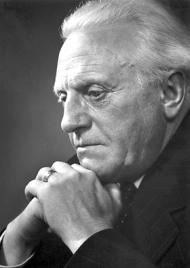The New York Public Library (NYPL) is a public library system in New York City. With nearly 53 million items, the New York Public Library is the second largest public library in the United States (and third largest in the world), behind only the Library of Congress. It is an independently managed, nonprofit corporation operating with both private and public financing. The library has branches in the boroughs of Manhattan, The Bronx and Staten Island and it has affiliations with academic and professional libraries in the metropolitan area of New York State. The City of New York's other two boroughs, Brooklyn and Queens, are served by the Brooklyn Public Library and the Queens Borough Public Library, respectively. The branch libraries are open to the general public and consist of research libraries and circulating libraries.
The library originated in the 19th century, and its founding and roots are the amalgamation of grass-roots libraries, social libraries of bibliophiles and the wealthy, and from philanthropy of the wealthiest Americans of their age.
The Founding
At the behest of Joseph Cogswell, John Jacob Astor placed a codicil in his will to bequeath $400,000 for the creation of a public library. After Astor's death in 1848, the resulting board of trustees executed the will's conditions and constructed the Astor Library in 1854 in the East Village. The library created was a free, reference library, as its books were not permitted to circulate. By 1872, the Astor Library was a "major reference and research resource", but, "Popular it certainly is not, and, so greatly is it lacking in the essentials of a public library, that its stores might almost as well be under lock and key, for any access the masses of the people can get thereto".
An act of the New York State Legislature incorporated the Lenox Library in 1870. The library was built on Fifth Avenue, between 70th and 71st street, in 1877 and to it, bibliophile and philanthropist James Lenox donated a vast collection of his Americana, art works, manuscripts, and rare books, including the first Gutenberg Bible in the New World. At its inception, the library charged admission and did not permit physical access to any literary items.
Former Governor of New York and presidential candidate Samuel J. Tilden felt that a library with city-wide reach was required, and upon his death in 1886, he bequeathed the bulk of his fortune—about $2.4 million—to "establish and maintain a free library and reading room in the city of New York". This money would sit untouched in a trust for several years, until John Bigelow, a New York attorney, and trustee of the Tilden fortune, came up with an idea to merge two of the city's largest libraries.
Both the Astor and Lenox Libraries were struggling financially. Although New York City already had numerous libraries in the 19th century, almost all of them were privately funded and many charged admission or usage fees. On May 23, 1895, Bigelow and representatives of the two libraries agreed to create "The New York Public Library, Astor, Lenox and Tilden Foundations". The plan was hailed as an example of private philanthropy for the public good. The newly established library consolidated with the grass-roots New York Free Circulating Library, in February 1901.
In March, Andrew Carnegie tentatively agreed to donate $5.2 million (presently, $1,434,992,000) to construct sixty-five branch libraries, with the requirement that they be maintained by the City of New York. The Brooklyn and Queens public library systems, which predated the consolidation of New York City, eschewed the grants offered to them and did not join the NYPL system because they felt that they would not be treated equally with their Manhattan and Bronx counterparts. Later in 1901 Carnegie formally signed a contract with the City of New York to transfer his donation to the city to then allow it to justify purchasing the land to house the libraries. The NYPL Board of trustees hired consultants, and then accepted their recommendation that a very limited amount of architectural firms be hired to build the Carnegie libraries so as to assure uniformity of appearance and to minimize cost. Consequently, the trustees hired McKim, Mead & White, Carrère and Hastings, and Walter Cook to design all the branch libraries.

